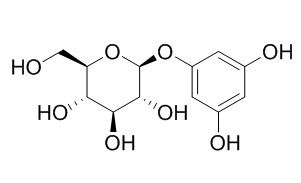Phlorin
Reference standards.
Inquire / Order:
manager@chemfaces.com
Technical Inquiries:
service@chemfaces.com
Tel:
+86-27-84237783
Fax:
+86-27-84254680
Address:
1 Building, No. 83, CheCheng Rd., Wuhan Economic and Technological Development Zone, Wuhan, Hubei 430056, PRC
Providing storage is as stated on the product vial and the vial is kept tightly sealed, the product can be stored for up to
24 months(2-8C).
Wherever possible, you should prepare and use solutions on the same day. However, if you need to make up stock solutions in advance, we recommend that you store the solution as aliquots in tightly sealed vials at -20C. Generally, these will be useable for up to two weeks. Before use, and prior to opening the vial we recommend that you allow your product to equilibrate to room temperature for at least 1 hour.
Need more advice on solubility, usage and handling? Please email to: service@chemfaces.com
The packaging of the product may have turned upside down during transportation, resulting in the natural compounds adhering to the neck or cap of the vial. take the vial out of its packaging and gently shake to let the compounds fall to the bottom of the vial. for liquid products, centrifuge at 200-500 RPM to gather the liquid at the bottom of the vial. try to avoid loss or contamination during handling.
The Journal of Internal Korean Medicine2015, 36(4):486-497
Journal of Molecular Liquids2021, 334:116014.
Nutrients.2020, 12(12):3638.
Int Immunopharmacol.2024, 143(Pt 2):113486.
Molecules.2018, 23(12):E3103
Asian J Beauty Cosmetol2020, 18(3): 265-272.
The Malaysian journal of pathology2019, 41(3):243-251
Int J Mol Sci.2020, 21(6):2190.
Molecules.2019, 24(16):E2985
Chulalongkorn University2024, 4761190
Related and Featured Products
Inorg Chem. 2015 Apr 6;54(7):3501-12.
Electrochemical and spectroelectrochemical studies of diphosphorylated metalloporphyrins. Generation of a phlorin anion product.[Pubmed:
25789714]
METHODS AND RESULTS:
The free-base and five metalated porphyrins with nonredox active centers undergo two ring-centered oxidations and two ring-centered reductions, the latter of which is followed by a chemical reaction of the porphyrin dianion to give an anionic Phlorin product. The Phlorin anion is electroactive and can be reoxidized by two electrons to give back the starting porphyrin, or it can be reversibly reduced by one electron at more negative potentials to give a Phlorin dianion. The chemical conversion of the porphyrin dianion to a Phlorin anion proceeds at a rate that varies with the nature of the central metal ion and the solvent. This rate is slowest in the basic solvent pyridine as compared to CH2Cl2 and PhCN, giving further evidence for the involvement of protons in the chemical reaction leading to Phlorin formation. Calculations of the electronic structure were performed on the Ni(II) porphyrin dianion, and the most favorable atoms for electrophilic attack were determined to be the two phosphorylated carbon atoms.
CONCLUSIONS:
Phlorin formation was not observed after the two-electron reduction of the cobalt porphyrins due to the different oxidation state assignment of the doubly reduced species, a Co(I) π anion radical in one case and an M(II) dianion for all of the other derivatives. Each redox reaction was monitored by thin-layer UV-visible spectroelectrochemistry, and an overall mechanism for each electron transfer is proposed on the basis of these data.



